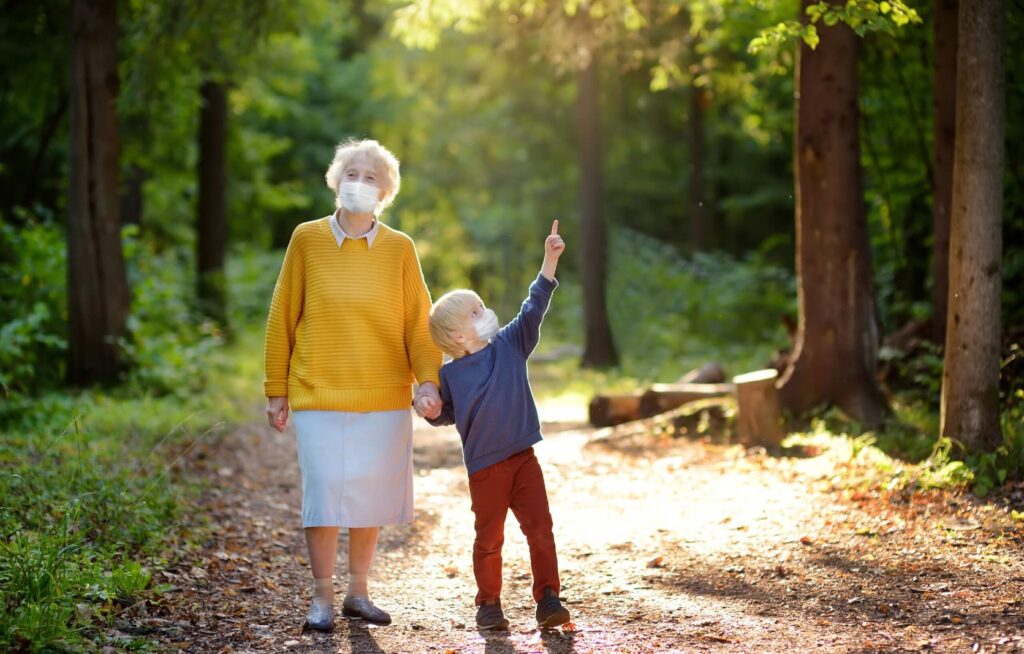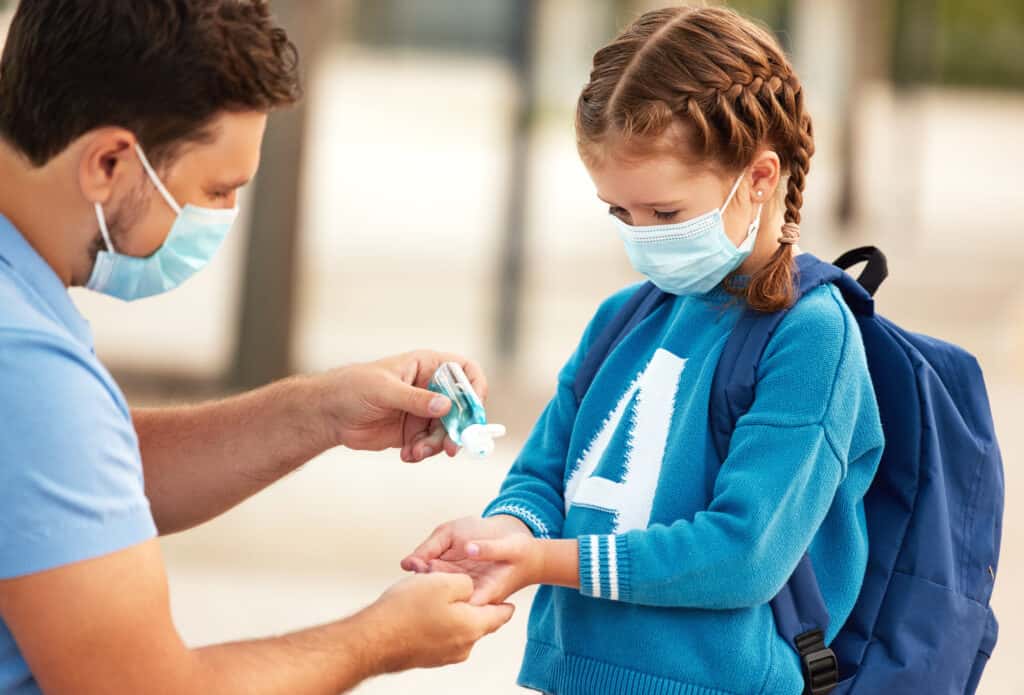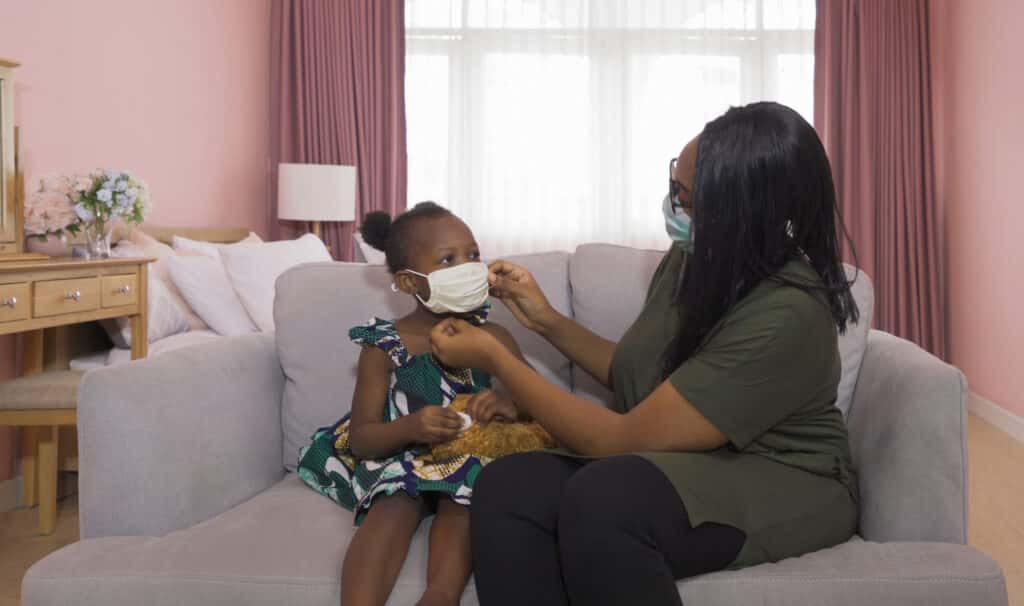
As the COVID-19 pandemic continues, parents remain acutely concerned about the health risks for their children and vulnerable family members and protecting kids from COVID-19.
Students K-12 are back in classrooms, playing team sports, socializing and otherwise out and about. In addition, with the holidays and seasonal cold weather just around the corner, everyone will be in closer quarters, which means a higher risk of contagion. The mantra, “Mask up, wash your hands, and practice social distancing!” has been a constant refrain since early 2020 and for many, pandemic fatigue has set in. However, with the Delta variant at least twice as infectious as the original COVID-19 strain, and new variants expected to occur, this is not the time to relax crucial safety protocols.
Are children getting COVID-19?
The American Academy of Pediatrics reports that, “As of September 16, over 5.5 million children have tested positive for COVID-19 since the onset of the pandemic. Nearly 226,000 cases were added the past week, the third highest number of child cases in a week since the pandemic began. After declining in early summer, child cases have increased exponentially, with over 925,000 cases in the past 4 weeks.”
A Reminder: Proactive ways to reduce the risk of contracting and spreading COVID-19

Vaccines are the strongest known defense against severe COVID-19 illness. According to Yale Medicine, “Although each vaccine is unique, all of them offer strong protection against severe disease.” All family members over the age of twelve should be fully vaccinated, and children aged 5 to 11 may soon be eligible for the vaccine pending FDA approval. According to Pfizer and Biontech, “The safety profile and immunogenicity data in children aged 5 to 11 years vaccinated at a lower dose are consistent with those we have observed with our vaccine in other older populations at a higher dose.”
Masks provide protection to both vaccinated and unvaccinated people in public spaces. A new study led by researchers from Yale University, Stanford Medical School, University of California, Berkeley, and Innovations for Poverty Action (IPA) found that increased mask wearing, “led to a significant reduction in the number of people with COVID-19, based on symptom reporting and SARS-CoV-2 antibody testing.”
Rapid Antigen and PCR Diagnostic Testing: Rapid antigen tests such as the BinaxNOW Self Test provide results in less than 30 minutes and can provide critical information in the case of a positive test result, or peace of mind if family members are symptomatic or have been exposed to COVID-19. PCR tests, also called molecular tests, need to be sent to a lab for analysis and generally provide results within 1-3 days.
Handwashing with soap and water should be frequent and thorough with a duration of at least 20 seconds. According to the CDC, “Washing hands with soap and water is the best way to get rid of germs in most situations. If soap and water are not readily available, you can use an alcohol-based hand sanitizer that contains at least 60% alcohol. You can tell if the sanitizer contains at least 60% alcohol by looking at the product label.”
Cleaning and disinfecting the home environment is an important protocol to reduce exposure to COVID-19. According to Kaiser Permanente, “If the surfaces in your home are dirty, you’ll want to clean them first and then disinfect. Focus on the areas that get touched the most or collect the most germs. Some areas you’ll want to keep regularly disinfected include:
- Door handles and knobs
- Tabletops
- Light switches
- Bathroom and kitchen counters and surfaces
- Faucets and sinks
- Toilets
- Mobile phones and devices
The CDC also recommends wearing gloves while cleaning and disinfecting and throwing them away when you’re done.”
Social distancing is hard, especially for those under the age of twelve who are not yet eligible to be vaccinated. It’s not about isolation, it’s about minimizing close contact indoors and in public spaces. For both vaccinated and unvaccinated people, reducing physical or close spatial contact with anyone other than immediate family can mitigate the risk of contracting COVID-19.
My child doesn’t feel well. Is it a cold, the flu or COVID-19?
Although there are exceptions, in general children who contract COVID-19 don’t experience severe illness and may even be asymptomatic. Some symptoms of COVID-19 present in the same way as other illnesses and rapid antigen testing can help rule out whether symptoms are due to COVID-19, allergies, seasonal flu or a cold. According to Dr. Brittany Weber, a pediatrician with UCHealth Pediatric Care, “Sometimes they have a fever, sometimes barely a runny nose, and others will have all the symptoms.” Weber also states, “Children don’t seem to be getting sicker with the delta variant. They are just more likely to catch it.”
COVID-19 Symptoms can include:
- Fever or chills
- Cough
- Shortness of breath or difficulty breathing
- Fatigue
- Muscle or body aches
- Headache
- New loss of taste or smell
- Sore throat
- Congestion or runny nose
- Nausea or vomiting
- Diarrhea
What should parents do if their child is feeling ill?

First, don’t panic. Remember that kids get the sniffles, colds, the flu and seasonal allergies so their symptoms may not be related to COVID-19. However, it’s vitally important to keep your child at home, administer a COVID-19 test and, if needed, call your pediatrician for advice, especially if your child has any underlying conditions that put them at special risk. Until you know why your child is feeling ill, take additional precautions such as increased sanitation, indoor mask wearing, designate one caregiver (preferably a person who is fully vaccinated) and minimize contact with other people in the home.
What if my child tests positive for COVID-19?
In most cases, children with COVID-19 have mild symptoms. However, the CDC reports that some children have developed a “rare but serious disease that is linked to COVID-19 called Multisystem Inflammatory Syndrome (MIS-C).” You can find a symptom list on the CDC website, as well as advice on what to do if you think your child may be ill with MIS-C.
The CDC also provides extensive advice on how to care for someone in the home who has tested positive for the coronavirus including limiting contact, increasing protective measures such as improved ventilation, wearing gloves and masks, administering rapid antigen or PCR testing, monitoring family member health, and seeking immediate medical attention if symptoms worsen.
How long will my child have to be isolated and remain at home?
If your child is in K-12 school, it’s important to check with administrators on individual return to campus policies. The CDC is a reliable source for COVID-19 protocols and they advise to quarantine until:
- 10 days since symptoms first appeared and
- 24 hours with no fever without the use of fever-reducing medications and
- Other symptoms of COVID-19 are improving*
*Loss of taste and smell may persist for weeks or months after recovery and need not delay the end of isolation
How can I help my child and my family cope with COVID-19 in the home?
In the best of times, illness can adversely affect the entire family’s well-being. During the COVID-19 pandemic, families have also been impacted by uncertainty, heightened fear, social isolation, significant disruption of daily routines, economic concerns and childcare challenges. In as much as it’s possible under challenging conditions, keeping to familiar and predictable routines can help reduce the effects of stress.
According to a study in Neurobiology of Stress, “Although the acute and persisting effects of the COVID-19 pandemic on children are unknown, there is evidence that other significant stress exposures such as natural disasters and macroeconomic crises profoundly affect family dynamics and leave a lasting imprint on children’s development and mental health.” “There exists empirical work highlighting the positive effects of family rituals and routines for optimizing child health and development (Fiese et al., 2002). There also is evidence specifically indicating that the routines may serve as protective factors in the context of significant challenge and adversity.
What’s this I hear about a “Twindemic?”
In 2020, the flu season was one of the mildest ever recorded and the low case load is attributed to isolation, masking, and heightened hygiene practices. However, despite the highly contagious Delta variant, masking mandates have been relaxed, people are out and about, and it’s expected that the flu is going to hit with a vengeance during the 2021-22 flu season. According to Healthline, “Experts are warning that a resurgence in the flu, coupled with the rising number of COVID-19 cases, could cause a “twindemic” this fall, adding a greater burden to our healthcare system.”
What can parents and families do to protect their children, and themselves, from the risks of COVID-19 and the Delta variant?
Stick to all the safety protocols to minimize risks, have every eligible person in the family get fully vaccinated and if illness presents, or someone in the family has been exposed to COVID-19, immediately quarantine, get a rapid antigen or PCR test and follow up with medical care if needed.
